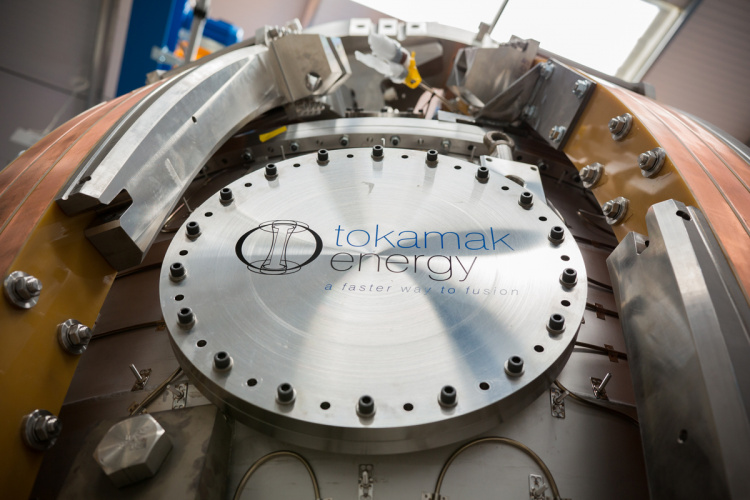 How can promising technologies with pay-offs decades or centuries in the future reach fruition when investment demands short term returns? Stuart Nathan looks to the skies and inside atoms to explore the issue
How can promising technologies with pay-offs decades or centuries in the future reach fruition when investment demands short term returns? Stuart Nathan looks to the skies and inside atoms to explore the issue
The history of engineering is well populated with might have beens. From Leonardo da Vinci's flying machines to Nikola Tesla's wireless electricity transmission, ambitions and research have often failed to reach fruition. And while the eyes of many engineers have been fixed skyward in recent months in memory of the triumphs of half a century ago, space is also the arena where one of the more recent dream projects seems fated to fall short – at least in the short term.

A recent article in MIT Technology Review caught my eye via a link on social media: a fruitful arena for the wandering eye in search of inspiration for commentary. Atossa Araxia Abrahamian wrote in June about the strange death of the asteroid mining industry. Readers might wonder – as I certainly did – how an industry that doesn't exist could be said to die. And to summarise this article, that is sort of the point. Asteroid mining, a staple of science fiction, seemed set to have started on the road to becoming reality in 2012 with the foundation of a company called Planetary Resources, founded by Chris Lewicki and Peter Diamandis, a former NASA engineer and space tourism pioneer. Attracting the interest of deep-pocketed individuals like Hollywood director James Cameron and former Google CEO Eric Schmidt, the business raised a large amount of money in a short period on the promise of a far-sighted strategy of building up towards being able to extract valuable minerals from asteroids and return them to Earth.
The problem with this vision, as Abrahamian explained, was that it foundered on the rocks of financial reality, as have other asteroid mining ventures. The final goal of this nascent sector seemed sound, if somewhat dependent on a few assumptions: we know that supplies of many minerals on Earth are finite but our need for them will continue to grow, we also know they are likely to exist in lumps of rock in space. Surely at some point it will become economic to venture out into the void and bring back riches: it's how civilisations have grown for centuries (even if the void back in the 16th century was the unknown stretch of the Atlantic rather than the vacuum of space).
But business finance isn't content with those long-term and uncertain returns. There might be a bounty of rare-earth metals, platinum, lithium and titanium floating out between the orbits of Mars and Jupiter, but if there is no prospect of them hitting the markets of East Asia for a silicon fraction of a century, that's not going to satisfy investors. Funding for technology start-ups tends to want a return within a decade; typically seven years. Investment funds tend to want to sell their interest in new industries as the companies they have helped found become income-earning. And asteroid mining is such a long-term game that there was no prospect of any product that companies like Planetary Resources could start to sell to get that income rolling in. The company plans to produce small and low-cost space telescopes which would be attractive for researchers to invest in to survey for exo-planets and interesting astronomical phenomena, but that would never be attractive enough to build up an income stream that might attract a buyer for the company to secure a return on that initial start-up investment. And so the sector could be said to be still-born.
This is a problem that many nascent high-technology sectors have to cope with. No matter how attractive the final payoff of your concept, if it is in the far future you are going to find it difficult to raise funds if there is no way to start the income ball rolling. We can look at some other huge projects as an example. Would market capital have funded the development of nuclear energy? Highly unlikely. It's only because the short-term goal of the project that eventually led to this development was something needed by the military – a weapon of mass destruction to end the most destructive conflict in history – that the project kept going. And even then, many of its most important R&D staff (with a few exceptions) considered that they had been deceived into continue their work because their goal – fighting Nazi Germany – turned out to be a lower priority for their paymasters than defeating Japan.
In this case, as with the first manned explorations of space, geopolitics and government funding turned out to be the answer to reaching those long-term goals. And economists like Mariana Mazzucato of University College London have written about how government funding is underrated as a source of R&D finance for commercial projects (Mazzucato’s favourite example is the many publicly funded research projects which fed into the development of the Apple iPhone, without which she says it is unlikely to have ever hit the market). But while government funding is important, few people (including, it has to be said, most finance ministers) believe it can be the answer to all problems.
One of the most obvious current long-term R&D goals is development of nuclear fusion power. The final goal is one with a market which we all know exists and will not go away, but seems certain to continue to grow: the need for electricity, and specifically electricity whose production does not contribute to climate change. But ever since the earliest days of nuclear research, that goal has been said to be at least three decades from reaching fruition (and, as cynics always point out, that particular goalpost is always the same distance away and recedes in real time – it's still 30 years off). With the current economic model, who is going to sink their money into that?
One answer is of course governments. And the enormous and spectacular building site of the Iter project near Marseille is testament to that. But other nuclear fusion projects are underway funded by private finance, which some observers say means that they are more likely to succeed if only because their investors will demand progress and financial return.

This is why some of these projects are promoting midway finance streams. These are based on the other things that fusion can do – most notably, produce streams of high energy neutrons that are not available from other technologies. What can you do with neutrons? You can theoretically transmute nuclear waste from fission into less radioactive and harmful elements – this is promoted by UK firm Tokamak Energy, for example. You can use them in medicine, and in an upcoming issue of The Engineer we will explain how US fusion company TAE Technology is using the underlying technology behind its neutral beam injectors (equipment which helps heat plasma to the high temperatures required to trigger fusion) to produce cancer therapy equipment. The question still remains over whether these income streams will be attractive enough to help the companies bridge the gap to reaching their long-term goal of selling clean energy or the technology required to generate it.
Does this mean that we need a new model to finance companies with big dreams like asteroid mining or nuclear fusion? Or does it mean that such companies have to be more creative in coming up with ways to generate income streams to help them reach their goals without diluting the thrust of their research that so enthuses the people who work on them? Not being an economist, I am not in a position to answer that question. But for many years, research-based start-ups have faced the problem of crossing the "valley of death" that lies between their promising initial results and commercialising a product. This valley is often said to be caused by the dying away of the initial hype that first attracted investors, with the remark that start-ups should avoid triggering too much hype.
But if that hype is the only way they can get initial money in, then what option do they have? Mariana Mazzucato might be right in saying that government funding is the only feasible other option, but that would require politicians to be much more forward thinking and place more trust in what is disparagingly called "blue sky" research than they currently are willing to do. Proponents of asteroid mining (the ultimate in "blue sky"?) might be right that it's the only feasible option for the human race to get its greedy hands on the elements needed to continue our technological lifestyles. But if that option lies decades or even centuries off, how are we ever going to reach it if finance only works in seven-year cycles?




Glasgow trial explores AR cues for autonomous road safety
They've ploughed into a few vulnerable road users in the past. Making that less likely will make it spectacularly easy to stop the traffic for...